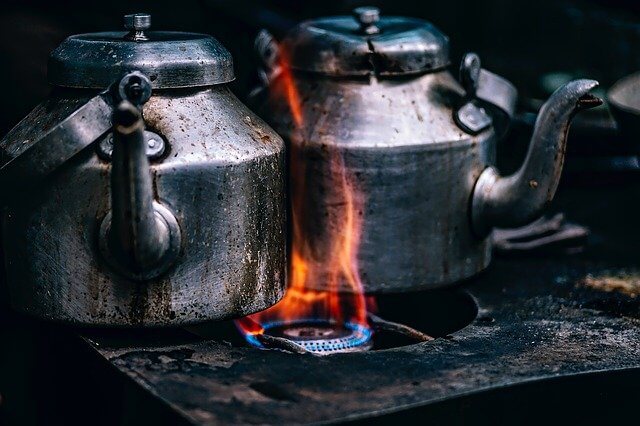What is convection? How does the heat transfer occur by convection? What are the heat transfer methods and information?
When you open an outside door in cold weather, cold air pours in and flows along the floor while warm air flows out the top. If you stand near a register or hold your hand over a radiator or a stove, you can feel warm air moving upward. Most of the time warm air is rising around your body and carrying heat away from you. Around a cake of ice, cold air flows down and away as warm air takes its place, bringing heat to the ice. You can find many other examples of currents in air and also in water.
Both air and water begin to move almost every time because of a difference in temperature between two places in these fluids. Heat is transferred from the place of higher temperature to the place of lower temperature by the moving fluid. This method of heat transfer is called convection. So a current in any fluid that carries heat from one place to another is known as a convection current.

Source : pixabay.com
To understand just what causes a convection current in a fluid, you must first have clearly in mind what happens to the density of liquids and gases when they are heated or cooled. The density of a material is the weight of a certain volume of the material. Like most other materials, fluids expand when heated and contract when cooled. That is, a pound of air or water takes up more space when it is warm than when it is cool. So cool air is denser than warm air, and cool water is denser than warm water. In other words, a cubic foot of cool air weighs more than a cubic foot of warm air. And the same is true for water. For example, a cubic foot of cold water weighs about 62 pounds. A cubic foot of hot water weights about 59 pounds.
Gravity pulls down harder on denser, cool air than on less dense, warm air. The cool air moves downward, flows under the warm air, and pushes it upward. In just the same way, gravity pulls down harder on denser, cool water than on less dense, warm water. Because of the greater pull, the cool water moves downward and pushes the warm water upward. In either case, the cooler fluid sinks below the warmer one, while the warmer fluid floats above the cooler one.
From what you have already learned, you can easily understand why convection currents cause air and water to circulate. Air keeps on moving upward around a warm radiator or stove because a new supply of air is constantly being heated. Just as soon as the cool air pushes the warm air up, the cool air itself comes near the radiator or stove. So it also gets warm, expands, and becomes less dense. Then more cool air pushes this warm air up. This happens over and over and keeps the air circulating so long as the radiator or stove is warmer than the air around it.

Source : pixabay.com
Much the same thing happens when something cold, such as a cake of ice, is put in warm air. The air next to the ice is cooled. This air contracts and becomes denser. As gravity pulls it downward, it flows under the warm air. Then the warm air is pushed up against the ice, where it, too, cools and sinks. So the circulation keeps up until all the air is as cold as the ice or until all the ice is melted. Similar conditions cause water as well as air to circulate.
Transfer of heat by convection is quite different from transfer of heat by conduction. Conduction takes place in solids, liquids, and gases, while convection occurs only in liquids and gases, which are fluids. When heat is conducted, it passes from molecule to molecule within the material but without the material moving. When heat is transferred by convection, the molecules of heated liquid or gas actually move from one place to another. So heat is carried from place to place by the ipoving material. The movement of the material is a convection current. Two examples of convection currents you are familiar with are winds and ocean currents.